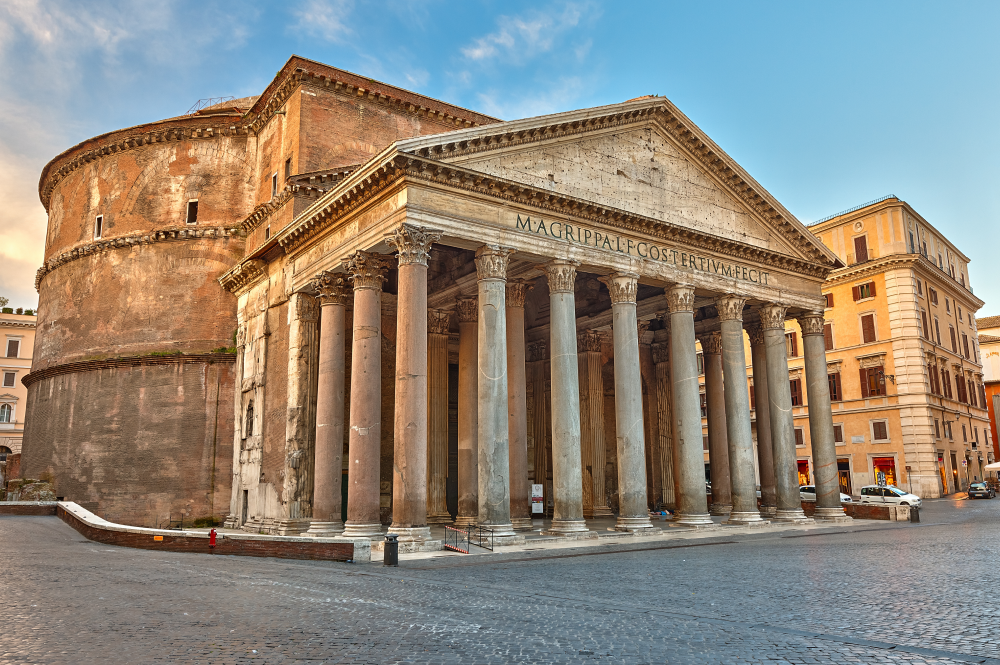What Can We Learn about The Pantheon’s Concrete?

The Pantheon in Rome has been around for about 2,000 years, and although it is now a church rather than a temple to the gods, it is a worthy tribute to ancient Roman skills and a homage to ancient concrete.
Pantheon History
It was originally built on the site of an earlier temple commissioned by Marcus Agrippa during the reign of Augustus, then after that burnt down, the present building was ordered by the emperor Hadrian and probably dedicated AD 126.
It is the largest building created with unsupported concrete, with a dome of 43.4m in diameter and 21.75m high.
It is still the most visited site in Italy, having weathered centuries of tourists, floods, wars and earthquakes.
Concrete Construction
The foundations of the Pantheon are made of concrete, originally 4.7m deep and 7.3m thick. Research shows that during construction, the foundations cracked due to the clay below, resulting in a second reinforced ring being used on top. In addition to this, thick walls were built to the south of the building to stabilise the structure.
Concrete Technique
The basic concrete recipe the Romans followed used lime and ‘Pozzolana’ sand, a type of volcanic ash found near Naples. The foundations are made of a heavy travertine limestone, whilst understandably a lighter rock was chosen for the dome, consisting of small amounts of travertine, terracotta, tufa and pumice.
A material mix to create calcium hydroxide to create compounds was used to make the dome durable, allowing it to last hundreds of years without the steel tension rods that structures use today.
What We Can Learn
Engineers are now looking at the chemical properties of concrete used by Romans to see if they can be reproduced to make buildings that last longer, resulting in less waste and seeing if the concrete can be used in place of steel tension rods. Modern measuring technologies are helping with this, making it easier to discover the exact chemical properties used.
By learning from ancient structures, we may be able to find new processes of constructing and designing buildings, to extend the life of materials and reduce the waste generated.


